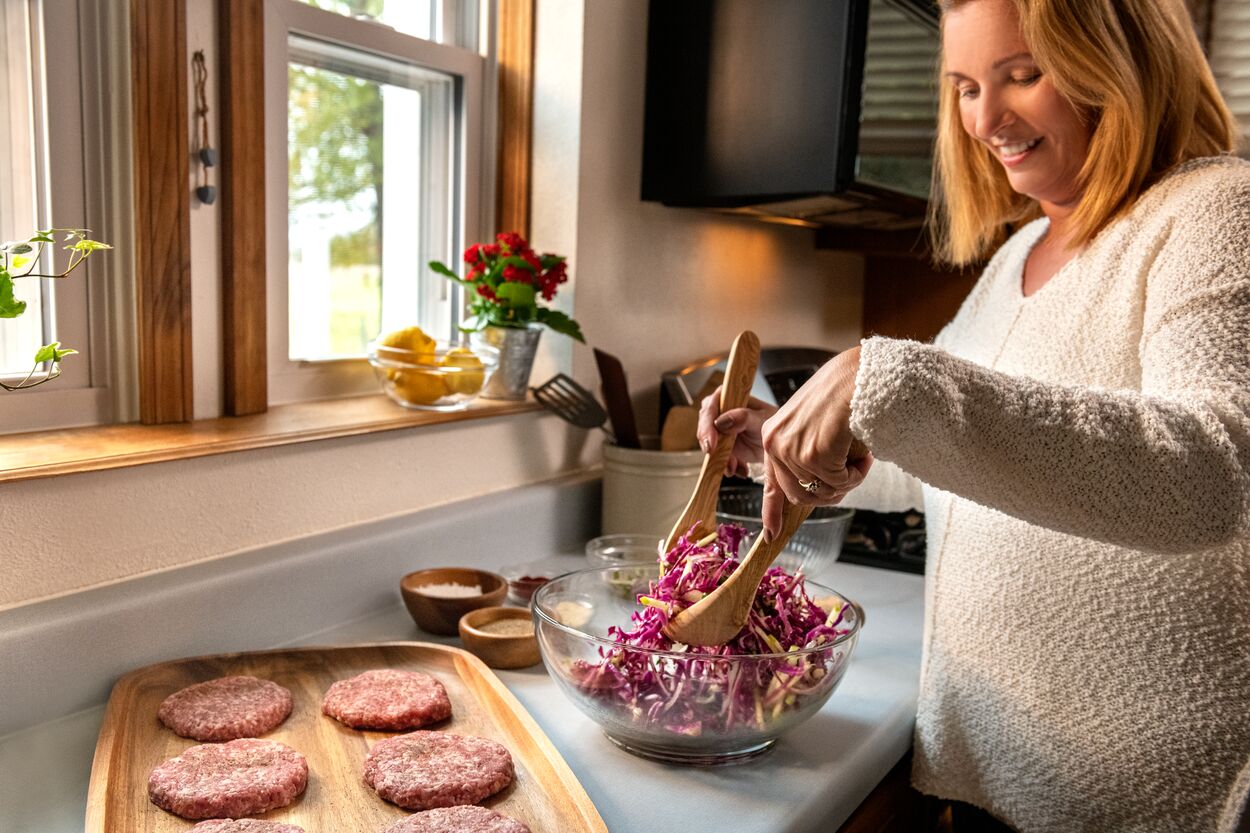Pork Safety
It’s important to follow proper food safety steps when handling, cooking and serving meat to prevent illness.
Don’t cross-contaminate
- Separate raw meat, poultry, seafood and eggs from other foods.
- Keep different kinds of raw animal-based foods separate.
- Use one cutting board for fresh produce and a separate one for raw meat, poultry and seafood.
- Never place cooked food on a plate or area that previously held raw meat, poultry, seafood, eggs or raw vegetables.
- Once a marinade has touched raw meat, bring it to a boil before consuming.

Always wash your hands thoroughly with hot, soapy water before and after handling raw meat.
Is your Meat Thermometer Accurate?
0:30Cook to the safe internal temperature
- Using a meat thermometer is the best way to test for doneness, ensuring both a safe and delicious eating experience. Make sure your meat thermometer is accurate!
- Cook whole muscle cuts like pork chops and pork tenderloin to a minimum of 145° F followed by a 3-minute rest time prior to eating. Check the internal temperature in the thickest part of the food.
Wash your cutting boards, dishes, utensils, and countertops after preparing each food item, and consider using paper towels to clean up surfaces.
Refrigerate promptly
- Refrigerate or freeze meat as soon as possible. Keep cold food at 40° F or below in a refrigerator or under ice and keep hot food at 135° F or above.
- Never let raw meat sit at room temperature for more than two hours before putting it in the refrigerator or freezer.
- Never defrost food at room temperature. Food must be kept at a safe temperature during thawing. There are three safe ways to defrost food: in the refrigerator, in cold water, and in the microwave. Food thawed in cold water or in the microwave should be cooked immediately.


